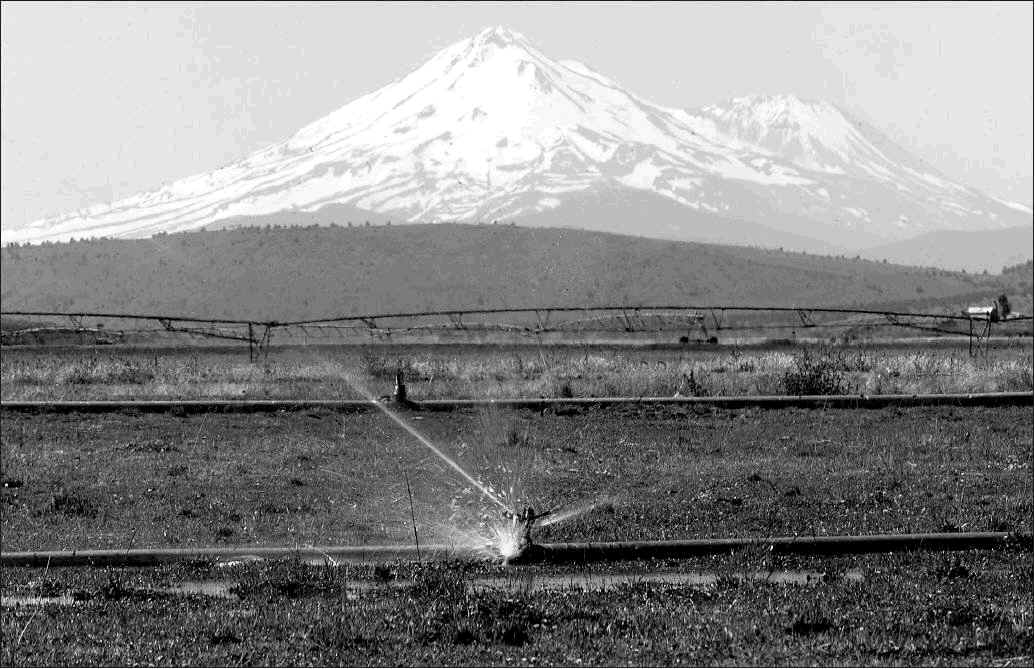
Our Klamath Basin Water Crisis
Upholding rural Americans' rights to grow food,
own property, and caretake our wildlife and natural resources.

Our Klamath Basin
Water Crisis
Upholding rural Americans' rights to grow food,
own property, and caretake our wildlife and natural resources.
Irrigators pursue power rate options
Klamath Water Users
Association looks for compromise
July 13, 2006

Greg Addington, executive director of the Klamath Water Users Association, said officials are looking at any means necessary to curb PacifiCorp’s rate increase. Numerous options exist but finding one that will benefit all 1,400 of the Project’s irrigators is the key, Addington said. “We’re not gonna hang our hats on this, we’re gonna control our own destiny,” he said. The Klamath Water Users Association’s first move was to work through the California and Oregon PUCs and courts to negotiate a rate that won’t strain irrigators or hurt PacifiCorp. Unfortunately, there have been setbacks in those areas, causing water users to look at other energy options, Addington said. Other power sources Energy from wind, solar or geothermal sources are attractive because they don’t require fossil fuels to support them, Addington said. The problem is building the necessary infrastructure and finding ways to distribute the energy. Board member Scott Seus said he holds the most hope for any option involving alternative energy. There are ridges in the Tule Lake area that have potential for wind energy generation, but he said that a combination of energy sources would probably be the solution. The association also has a controlling interest in the region’s four dams. Hydroelectric power could be distributed through a people’s utility district, but that would involve using infrastructure belonging to PacifiCorp that would likely be a drawn-out and nasty process to acquire, he said. Flood irrigation Other problems will arise as a result of the rate increase, Addington said. Farmers will level their fields and revert to flood irrigation, which uses less power but wastes water. For decades, irrigators who were part of the Klamath Project benefited from a relatively low power rate of six mills, or 0.6 cents, a kilowatt. The four hydroelectric dams in the region and benefits to the Klamath River justified a rate that only covered the generation of the electricity, Addington said. In April, irrigators began the phase-in process to the standard rate
PacifiCorp charges to customers outside the Basin.
That rate, on average, is 69.8 mills or 7 cents
per kilowatt, Pacificorp spokesman Dave Kvamme
said.
Oregon law requires a seven year phase-in for large rate increases, putting this year’s rate at 9 mills. California has no such law, but the California Public Utilities Commission and PacifiCorp negotiated a four-year phase-in for irrigators south of the border, putting their rate at 26 mills. Another increase next year Addington also said that there are concerns that PacifiCorp is already looking to increase the rate next year. Kvamme said that a rate case has been filed but that it was too early to say what the increase would be. The association and its irrigators are willing to compromise when it comes to their rate. No one expected to pay 6 mills for the next 50 years, Addington said, but there has to be a solution that will satisfy all parties involved. “We’re willing to try new things, we’re just not willing to go out of business,” he said. |
Home
Page Updated: Thursday May 07, 2009 09:14 AM Pacific
Copyright © klamathbasincrisis.org, 2006, All Rights Reserved